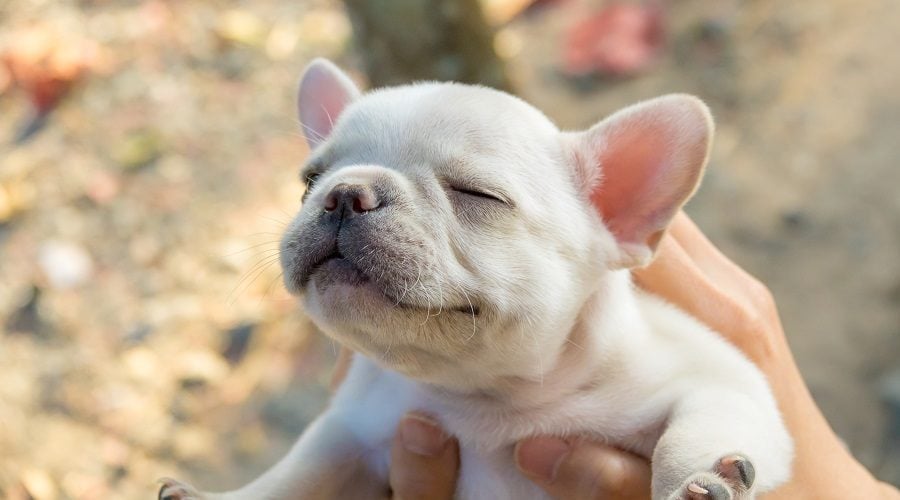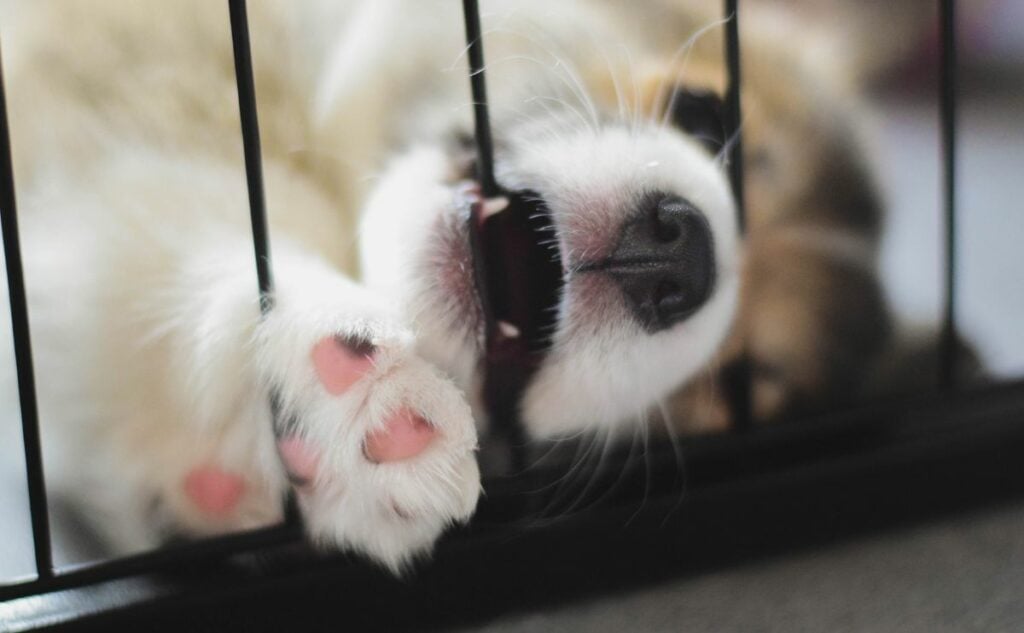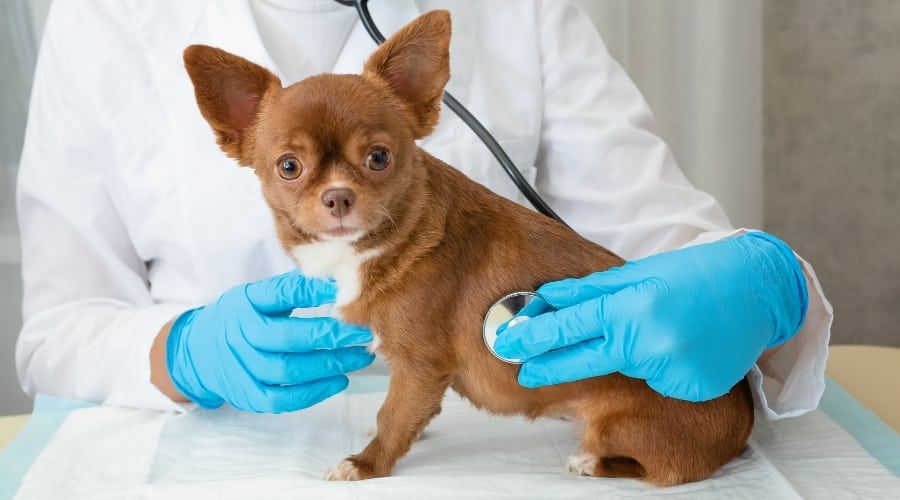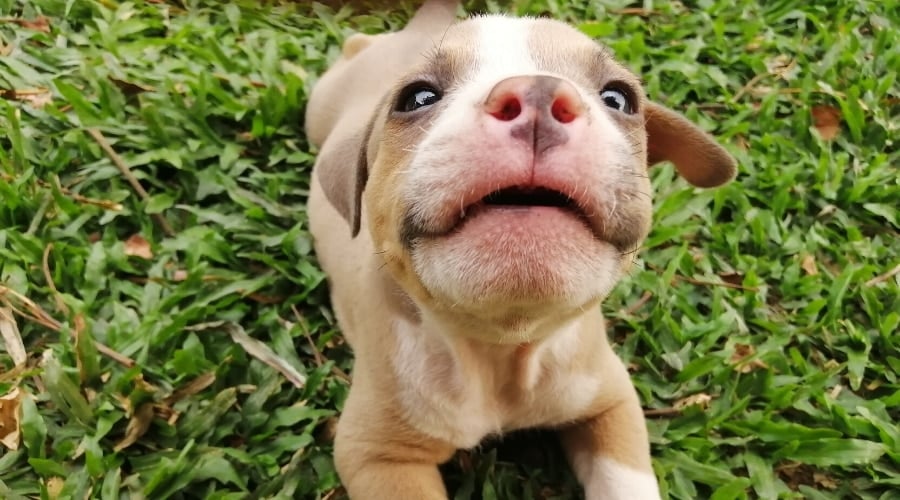New Puppy At Home? This Puppy Checklist Will Save Your Sanity
When you purchase through links on our site, we may earn a commission. Here’s how it works.
Why would you need a puppy checklist?
Table of Contents
Because bringing home a puppy is 10% snuggles and 90% what on earth just happened?!
When I brought home my first puppy, Bear, a 9-week-old black Lab with floppy ears and a taste for chaos, I thought I was ready. I had the food, the toys, the bed. But within hours, Bear had peed on the rug, howled like a tiny wolf all night, shredded a sock, and left me wide-eyed at 3 a.m., wondering if I’d made the biggest (and best) mistake of my life.

That’s why we put together this ultimate puppy checklist to help you skip the panic and enjoy the magic. From house training to crate setup, socialization to sanity-saving tips, we’re here to guide you through every messy, heartwarming, tail-wagging moment of puppyhood. Because trust us, it’s a wild ride, but you’re going to love it.
Before Your Puppy Comes Home: Get Ready the Right Way
Bringing a puppy home isn’t just exciting; it’s a little overwhelming. Trust me, when Bear came barreling through my front door, I realized very quickly that excitement wasn’t enough. You want your home to be ready, your supplies in place, and your sanity intact.
Here’s what you should tackle before you pick up your puppy, so you can focus on bonding, not scrambling.
Puppy-Proofing Your Home
Before your puppy ever sets a paw inside, take time to look around your home and think like a curious, clumsy, teething baby. Puppies explore the world with their mouths, noses, and paws, and they have no idea what’s safe and what’s dangerous. Here’s how to get started with puppy-proofing your home.
- Start by tidying up cords and chargers. Electrical cords can look like chew toys, and a curious bite could lead to a dangerous shock. Tuck cords behind furniture or use cord covers to keep them safely out of reach.
- Next, set clear boundaries. Use baby or dog gates to block off rooms you want to keep puppy-free, like bedrooms, home offices, or stairs. Puppies love to wander, and gates help keep them safe while you establish house rules.
- Trash cans deserve extra attention. What smells gross to you often smells delicious to a puppy. Use a trash can with a tight-fitting lid or keep it behind a cabinet or in a pantry. This prevents everything from food scraps to coffee grounds from becoming a health risk.
- Take a walk through your home and move any toxic plants or small items off the floor or low surfaces. Common houseplants, such as lilies, pothos, and philodendrons, can be toxic if ingested. Likewise, shoes, socks, children’s toys, and anything small enough to swallow should be kept out of reach.
- Don’t forget the cleaning supplies. Store chemicals, medications, and sharp objects in a secure location using child-proof latches, if necessary. Puppies have a remarkable ability to nose open cabinets or drawers you thought were safe and secure.
- If you have a yard, check the outdoor space carefully. Make sure the fence is secure, there are no gaps or loose boards, and no toxic plants like azaleas or oleander are within reach. Also, look for sharp objects, garden chemicals, or anything a puppy might dig up and chew on.
A simple but surprisingly effective tip: get down on the floor and see the world from your puppy’s perspective. Crawling around may feel ridiculous, but it will help you spot hidden dangers, such as dropped coins, loose wires, or sharp corners, that you might otherwise miss.
Puppy-proofing isn’t about making your home perfect; it’s about removing obvious risks so you can relax a little and let your puppy explore safely. With just a little preparation, you set the stage for fewer emergencies and a lot more fun.
Our video below shares more puppy-proofing tips.
10 Must-Have Puppy Supplies (So You Don’t Panic at Midnight)
Before your puppy even steps paw into your home, you’ll want to have the right supplies on hand. Trust me, running to the pet store at midnight because you forgot a crate or cleaner is no fun.
Here’s what you’ll actually need to make those first days smoother (for both of you):
- Crate – A crate isn’t a punishment; it’s your puppy’s safe space. Choose one that’s just big enough for them to stand, turn around, and lie down comfortably.
- Food and water bowls – Go for stainless steel or heavy ceramic to prevent tipping and chewing. Plastic can harbor bacteria and scratches.
- Puppy food – Pick a high-quality food formulated for puppies, and check with your vet for recommendations specific to your breed or size.
- Collar, leash, and ID tag – Even if your puppy is indoors at first, accidents happen. Get an ID tag with your contact info and use a lightweight, adjustable collar.
- Puppy pads or potty bells – For early house training, especially if you live in an apartment or can’t always get outside right away.
- Chew toys and teething aids – Puppies need to chew — it’s how they soothe sore gums and explore. Give them safe, durable chew toy options so your shoes survive.
- Bedding – Choose something soft and washable. It doesn’t have to be fancy — remember, accidents and chewing will happen.
- Training treats – Small, soft, and super tasty treats are key for positive reinforcement during training sessions.
- Brush and grooming tools – Even if your puppy has short hair, start getting them used to being brushed and handled now.
- Enzyme cleaner – This is your secret weapon for cleaning up accidents and preventing repeat offenses. Regular cleaners won’t cut it.
Why Routine Matters for Puppies: Sleep, Training, and Trust
Puppies are adorable, unpredictable little creatures, but here’s a secret: they thrive on routine. Just like babies, puppies feel safest and happiest when they know what to expect. Establishing a predictable daily rhythm isn’t just about your convenience; it’s the foundation for building good behavior, reducing anxiety, and helping your pup grow into a confident, well-adjusted dog.

1. Feeding Schedule
Feed your puppy at the same time every day, usually 3 to 4 small meals depending on their age and breed. Scheduled meals help regulate digestion, make house training easier, and prevent picky eating habits. Leave the food down for 15 to 20 minutes, then pick it up. This teaches your pup to eat when it’s offered and keeps their stomach on a reliable clock.
2. Sleep Schedule
Puppies sleep a lot, often 18 to 20 hours a day, but they benefit from having a rough routine. Establish a regular bedtime and wake-up time, even on weekends. Use the crate as their sleep space, keep nighttime calm and quiet, and avoid rough play or big meals right before bed. A predictable sleep routine reduces nighttime whining and helps your puppy settle more easily.
3. Potty Schedule
Take your puppy outside at consistent intervals: first thing in the morning, after meals, after naps, after playtime, and before bed. Frequent, predictable potty breaks help prevent accidents and speed up house training. Remember the general rule: puppies can “hold it” about one hour per month of age, plus one.
4. Play and Training Schedule
Schedule short play sessions and training periods throughout the day. Puppies learn best in small doses, so sprinkle in 5- to 10-minute sessions rather than overwhelming them. A consistent rhythm of play, training, and rest builds trust, strengthens your bond, and helps your puppy understand what’s expected.

Why It Matters
Routine isn’t about being rigid; it’s about giving your puppy a sense of security. When they know when they’ll eat, sleep, play, and go out, they feel less anxious, make fewer mistakes, and learn faster. You’ll both be happier, calmer, and better prepared to tackle puppyhood together.
Puppy Exercise Tip
Did you know that too much exercise can harm a puppy’s growing joints, while too little can lead to behavior problems? Use the “five-minute rule”: five minutes of exercise per month of age, up to twice a day, and adjust based on your pup’s breed and energy level. When in doubt, consult your veterinarian. Learn how much exercise your puppy needs in our in-depth guide.
How to House Train Your New Puppy
House training your puppy is more than just preventing accidents; it’s about building trust, establishing a routine, and fostering confidence on both sides. And while it can feel overwhelming in the early days, the good news is that puppies are eager to learn when we guide them with consistency and kindness.

5 Steps to House Train Your Puppy
- Start right away
As soon as your puppy comes home, begin showing them where to go. Take them to the designated potty spot outside and give plenty of praise when they do their business. - Stick to a schedule
Take your puppy out frequently, at least every hour at first, and always after meals, naps, playtime, and before bedtime. Puppies thrive on routine. - Use positive reinforcement
Celebrate their success! Cheer, praise, or offer a small treat the moment they finish outside. This teaches them they’ve done something right. - Supervise closely indoors
Keep a close eye on your puppy when they’re not in a crate or confined space. Many owners use a leash or baby gates to prevent accidents in unseen corners. - Handle accidents calmly
If (when) accidents happen, stay calm. Interrupt them with a gentle “no” only if you catch them in the act. Clean the area thoroughly with an enzyme cleaner, and then move on. Never punish after the fact; they won’t understand why you’re upset.
How Long Can a Puppy Hold It?
A general rule: one hour per month of age, plus one. For example, a 4-month-old puppy can typically hold their pee for about 5 hours. But just because they can doesn’t mean they should: holding it too long can stress their body and mind. If you can’t be home every 5-6 hours, consider a dog walker or a trusted friend to help.
Sample Puppy Potty Schedule
- 7:00 AM — First potty break after waking up
- 7:30 AM — After breakfast
- 10:00 AM — Mid-morning break
- 12:30 PM — After lunch
- 3:30 PM — Mid-afternoon break
- 6:30 PM — After dinner
- 9:30 PM — Before bed
- 2:00 AM (optional for very young puppies) — Nighttime potty break
Remember, every puppy is different. Watch for signs like sniffing, circling, or whining; they’re often telling you they need to go.
House training takes patience, but every success builds your puppy’s confidence (and your own). With time, consistency, and lots of praise, you’ll both get through this stage and come out stronger together.
Crate Training 101: Giving Your Puppy a Safe and Happy Space
Leaving your puppy home alone for the first time can feel overwhelming — what if they cry, chew something dangerous, or have an accident? That’s where crate training becomes your best friend.

A crate isn’t a punishment; it’s a safe, cozy den where your puppy can relax, nap, and feel secure. When introduced properly, puppies see their crate as their own little “room,” a place that’s just for them. It helps prevent accidents, protects your belongings, and gives them a calm space to settle when you’re away.
5 Crate Training Tips
- Make the crate inviting with a soft blanket and a favorite toy.
- Start with short sessions while you’re home so your puppy gets used to it.
- Feed your puppy meals in the crate to build positive associations.
- Never use the crate for punishment.
- Ignore whining at night (as long as you’re sure they don’t need a potty break) to avoid reinforcing it.
If you’re gone for more than a few hours, arrange for someone to give your puppy a potty break. Once they’re fully vaccinated and spayed or neutered, doggy daycare can also provide exercise, social time, and fun while you’re away.
Raising a Social Puppy: How to Build Confidence and Good Manners
Socialization isn’t just about playdates and walks around the block; it’s about helping your puppy feel confident and calm in all kinds of situations. Early, positive exposure to new people, animals, places, sounds, and objects sets the stage for a lifetime of good behavior.

5 Puppy Socialization Tips
- Gently introduce your puppy to people of all ages, sizes, and appearances.
- Let them experience different surfaces (grass, sand, tile, wood) under their paws.
- Expose them to noises like vacuums, doorbells, or cars in a controlled way.
- Arrange short, positive play sessions with friendly, vaccinated dogs.
- Watch their body language; let them retreat or take breaks when they need to.
Puppy classes are a fantastic way to build these skills. They teach not only basic commands but also emotional resilience and social manners, plus, they’re fun for both of you. You can also find success with online dog training classes and apps. Many offer a variety of support options to help make training more successful.
Studies show that puppies exposed to extra positive social experiences during the first six weeks, like gentle handling, varied surfaces, and meeting new people, display lower anxiety, reduced distraction, and fewer separation issues by eight months of age. Attending puppy classes or participating in structured social play has also been linked to fewer behavioral problems, especially aggression and fear, later in life.
Puppy Training Basics: Building Trust, Obedience, and Fun
Training builds communication, teamwork, and trust. The earlier you start, the better. Basic obedience provides you with the tools to handle daily life, while advanced training offers mental stimulation and deepens your bond.
5 Puppy Training Tips
- Keep sessions short (5–10 minutes) to match your puppy’s attention span.
- Use positive reinforcement: treats, praise, and play work wonders.
- Be patient and consistent; don’t change the rules from day to day.
- Practice in different environments to help your puppy generalize commands.
- Make training a game — your puppy should look forward to learning.
After mastering the basics, explore intermediate obedience or specialty classes. Whether it’s agility, scent work, therapy dog certification, or trick training, there’s a world of fun ways to challenge your pup and strengthen your relationship.
Keep in mind: Teething peaks between 12 and 16 weeks. Provide safe chew toys and avoid punishing nipping or mouthing; it’s all part of the process.
Puppy Grooming & Handling Prep
Grooming teaches your puppy to stay calm and trust you when it matters most — during nail trims, baths, teeth brushing, vet visits, and everyday care. Starting early helps them get comfortable with being touched and handled, so routine tasks feel safe instead of scary. Keep sessions short, positive, and gentle, turning them into moments of connection instead of struggle.
Quick Grooming Tips
- Let them sniff brushes, clippers, and toothbrushes before using them.
- Gently touch paws, ears, and mouth during calm moments.
- Do short brushing sessions, even on short-haired pups.
- Give baths with lukewarm water and end with praise.
- Check ears, teeth, and eyes weekly for signs of irritation.
With a little patience, you’ll build not just a clean, well-groomed dog but a strong, trusting bond that lasts a lifetime.
Health Checklist: Vet Visits, Vaccinations, Insurance
Keeping your puppy healthy isn’t just about checkups — it’s about setting them up for a lifetime of wellness. A little planning now goes a long way in preventing problems later, saving you stress, heartache, and unexpected costs.

What to Cover in the First Months
- Schedule a vet visit early. Book your puppy’s first checkup within a few days of bringing them home to assess their overall health and establish a vaccination plan.
- Follow the vaccine schedule. Puppies typically require a series of vaccinations starting at 6–8 weeks of age and continuing every few weeks until approximately 16 weeks of age. Ask your veterinarian about core vaccines (such as distemper, parvovirus, and rabies) and any region-specific requirements.
- Start parasite prevention. Flea, tick, and heartworm preventatives are essential, even for indoor dogs. Discuss options with your vet.
- Consider microchipping. It’s a simple, low-cost procedure that dramatically increases the chances of reuniting if your puppy ever gets lost.
Pro Tip: Bring a list of questions to your puppy’s first vet visit, things like the best food for their breed, how to handle teething, when to spay/neuter, and what vaccines they’ll need. You’ll be less likely to forget something important when you’re in the moment.
Your vet is your partner in raising a happy, healthy dog: don’t be shy about asking questions or bringing up concerns. With regular care and protection in place, you’ll be ready to tackle puppyhood with confidence.
Consider Pet Insurance for Your Puppy
New puppies can cost a lot of money (see the costs associated with owning a dog). They are notorious for getting into trouble and winding up in the vet’s office, saddling you with a hefty vet bill. However, it is also a great time to secure a low rate for pet insurance since your dog has few (if any) pre-existing health conditions at such a young age.
Learn more to determine whether you should enroll in a pet insurance plan that protects you from the financial strains associated with an unexpected vet emergency.
Avoiding Common Puppy Mistakes
Raising a puppy is exciting, but it’s easy to slip into habits that can create long-term challenges. Being aware of common mistakes helps you avoid frustration and sets your puppy up for success.
Common Puppy Mistakes To Watch For
- Inconsistency. Changing the rules (like sometimes letting them on the couch, sometimes not) confuses your puppy and makes training harder.
- Skipping socialization. Missing the window for socialization (usually under 16 weeks) can lead to fearful or reactive behavior later.
- Over- or under-exercising. Too much exercise can harm growing joints; too little can create a bored, destructive pup.
- Punishing accidents. Puppies learn through positive reinforcement. Punishment after the fact only creates fear and confusion.
- Expecting too much, too soon. Puppies are babies. They make mistakes, push limits, and need gentle, patient guidance.
Help your puppy work through fear periods by keeping new experiences positive, gentle, and low-pressure, especially during first playdates or introductions. Let them approach at their own pace, and never force interactions.
Remember, mistakes are part of learning, for both of you. What matters is how you adjust and move forward together.
The Joy (and Chaos) of Puppyhood
Puppyhood is a whirlwind, messy, exhausting, joyful, and fleeting. One moment you’re chasing a wild zoomie through the living room, the next you’re melting as they fall asleep in your lap.
Raising a puppy is one of the most rewarding (and sometimes overwhelming) adventures you’ll ever take. With the right guidance, a little patience, and a lot of love, you can help your puppy grow into a happy, confident, well-behaved dog and enjoy every messy, magical moment along the way.

This stage will test your patience, challenge your routines, and sometimes make you wonder what you got yourself into. But it will also bring belly laughs, tail wags, and the kind of unconditional love that reminds you why you wanted a puppy in the first place.
Soak it up. Take photos of the chewed-up shoes and the muddy paws. Celebrate the little wins, like the first time they sit on cue or sleep through the night. Puppyhood goes by faster than you think, and the memories you make now will last a lifetime.
We’d Love to Hear Your Puppy Stories!
Every puppy journey is filled with its own joys, surprises, and lessons, and we know you have some great adoption stories to tell! What’s the funniest, sweetest, or most unforgettable moment you’ve had with your new puppy? Do you have a favorite tip that helped you through the chaos?
Share your puppy stories and tips in the comments below! Your experience could inspire, reassure, or make another puppy parent smile. Let’s build a community where we can all celebrate the ups, survive the downs, and enjoy this wild ride together.



